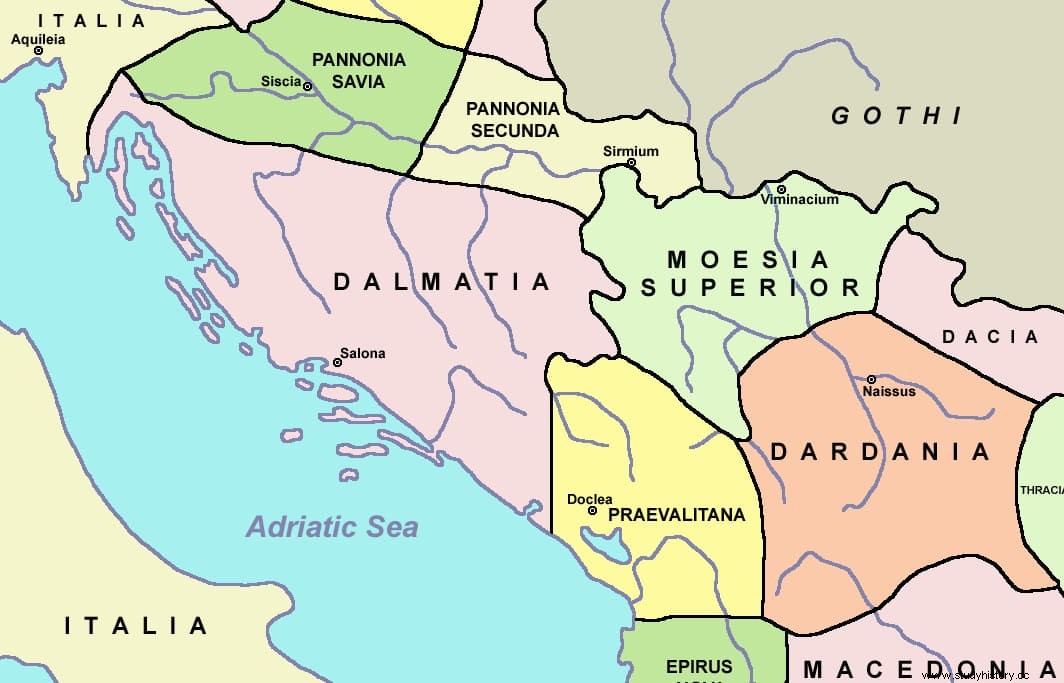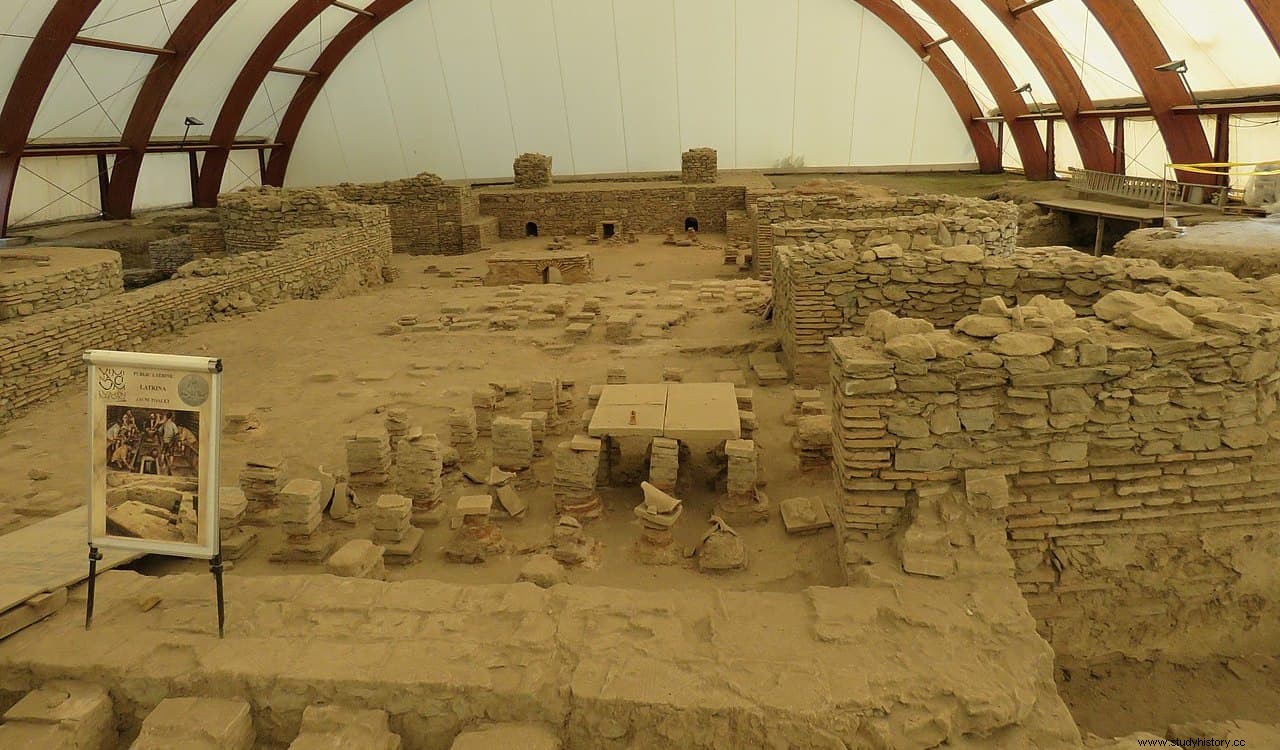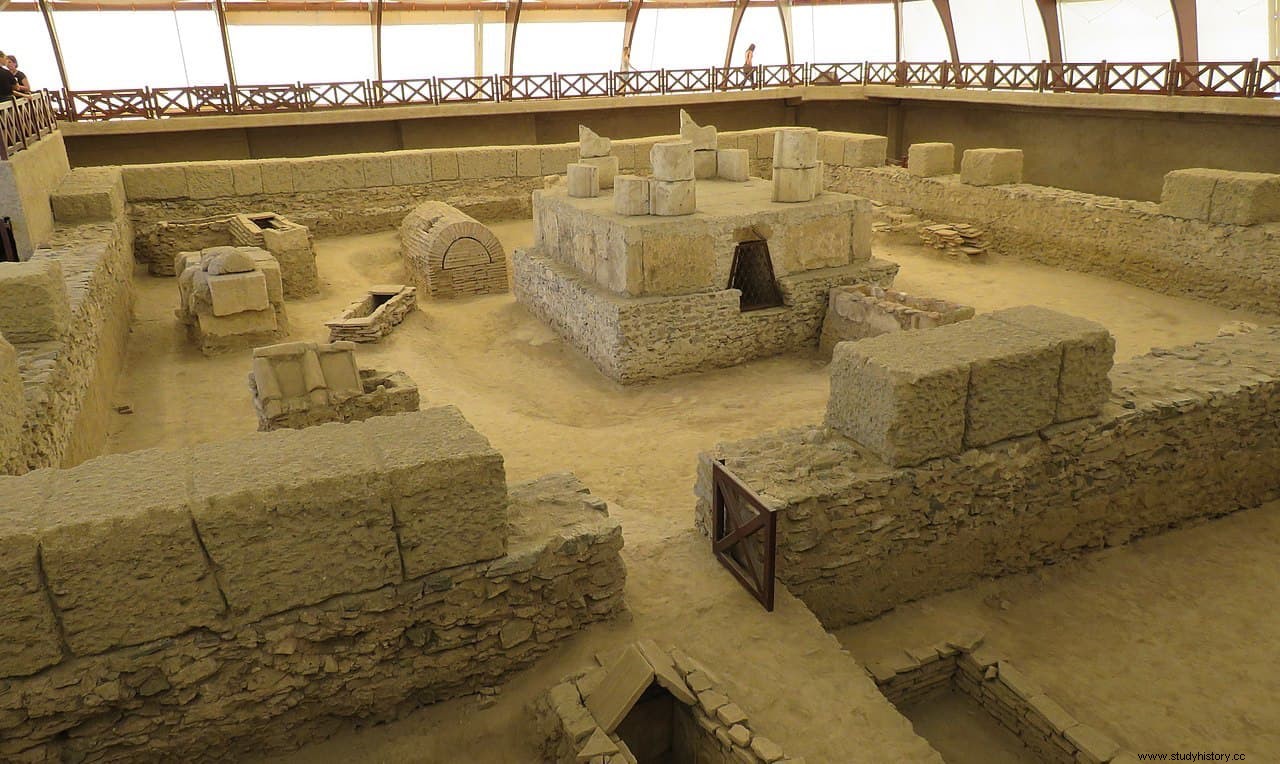In the year 86 AD the Dacians under their king Duras (Decebalus's predecessor) attacked the Roman province of Moesia south of the Danube. This forced the Emperor Domitian to personally travel to the region, reorganizing it for future campaigns. Domitian divided the province into two:Moesia Inferior (all of northern present-day Bulgaria and the southern bank of the Danube to its mouth) and Moesia Superior (present-day central Serbia, Kosovo, and part of North Macedonia).
One of the main cities of Moesia Superior was Viminacium, whose site is today about 12 kilometers from modern Stari Kostolac and 145 kilometers from Belgrade, in eastern Serbia.
It was founded in the 1st century AD. and at its peak it had 40,000 inhabitants. It was located on the Via Militaris, the road that ran along the southern bank of the Danube and ended in Byzantium, and between the Danube and Malva rivers, which made it an important commercial and communications center, as well as a military camp housing some 6,000 soldiers.

Trajan used it as his headquarters during the Dacian Wars between 101 and 106 AD. And in the year 239 AD. it became a colony with the privilege of minting money.
In 251 AD Emperor Hostilianus and his mother Herenia Etruscilla came to Viminacium to supervise the organization of the defense of the northern borders. While there an epidemic of plague spread, both dying in December of that same year. Due to the great distance that separated them from Rome, they were buried in a mausoleum in the necropolis, with full honors.

Diocletian visited Viminacium in AD 293, recording that the population wrote in Latin, rather than the Greek of the southern provinces. At that time the city had an amphitheater with capacity for 12,000 spectators.
Attila razed the city to the ground in 441 AD, although it was rebuilt by Justinian and survived another century and a half before being completely destroyed by the Avars between 582 and 599 AD.
The site, which was the first archaeological excavation in Serbia started in 1882, occupies an area of 450 hectares and has remains of Roman temples, streets, squares, amphitheaters, palaces, circuses and baths. More than 40,000 objects were found in it, 700 of them gold and silver. According to archaeologists, in 2018 only 3 to 4 percent of the total had been explored.

One of the most interesting discoveries is that of surgical and medical instruments, as well as the remains of medicines accompanied by inscriptions describing their content. This is the fifth place in Europe where Roman medicines have been found (along with Lyon, Reims, Padua and Cologne), and would show that scientific medicine and pharmacy developed before their introduction by Galen.
But Viminacium stands out for being the Roman site in which the largest number of tombs have been found, more than 15,000. Many of them built in masonry and decorated with frescoes, which document the passage from paganism to Christianity in their motifs. There are several necropolises, mainly from the 2nd and 3rd centuries AD. and mausoleums, among which the one found in 2018 near Hostiliano stands out, with an area of 15 by 15 meters and surrounded by 11 tombs.
In 2020, some lead sarcophagi were also found from between the 2nd and 4th centuries AD, one of which contained an inscription in Greek on a silver plate. And in November of that same year the Principium was found , the main seat of the castrum in which the Legio VII Claudia was quartered.

It is a large structure covering some 3,500 square meters and several floors, with 40 rooms, offices, armories, a sanctuary and a basilica, all surrounded by colonnades around a central courtyard.
The document Notitia Dignitatum , dated to the first quarter of the 5th century AD. and in which the structure and administration of the Roman Empire during the time of Theodosius is presented, it says that a part of the Roman Danube fleet was anchored at Viminacium. Although no river passes through the area today, the ancient mouth of the Malva in the Danube is located in the immediate vicinity, and in 2020 a Roman ship was found buried in the ancient riverbed, at a depth of about 8 meters.

It is a platform ship, built for shallow waters, about 15 meters long and 2.7 meters wide, and it still has remains of the tribune, indicating that it was a warship.
In recent years Viminacium has become one of the main tourist destinations for lovers of the Roman world, thanks above all to the Domus Scientiarum , a complex that combines scientific laboratories, a museum, tourist accommodation in the form of legionnaires' barracks and a spa that imitates Roman baths.
All this included in a Roman theme park of about 2 hectares that has 48 attractions.
